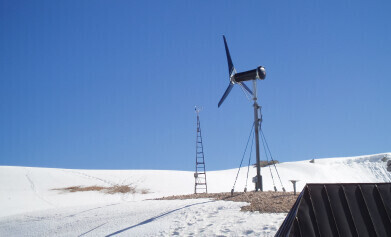Weather monitoring
How has the El Niño affected the 2023-4 ski season?
Mar 16 2024
The El Niño Southern Oscillation (ENSO) represents one of the most significant drivers of global climate variability. Characterized by periodic warming of ocean surface temperatures in the central and eastern Pacific Ocean, El Niño events disrupt weather patterns worldwide. The 2023-4 ski season has provided a clear example of how these climatic episodes can influence winter sports, affecting everything from snowfall patterns to operational dynamics of ski resorts.
El Niño events typically occur every two to seven years and can last anywhere from nine months to two years. The warming of ocean waters during El Niño leads to shifts in the atmospheric circulation patterns, notably the jet streams. These shifts can result in altered weather patterns across the globe, including warmer temperatures in parts of the northern hemisphere during winter months.
The 2023-4 ski season's susceptibility to El Niño underscores the interconnectedness of oceanic and atmospheric systems. The warm phase of ENSO has contributed to higher-than-average temperatures and reduced precipitation in regions that traditionally rely on cold, snowy conditions for skiing. This phenomenon is not just a matter of less snowfall; it affects the very quality and consistency of the snowpack, critical factors for both recreational and competitive skiing.
In regions like the Pacific Northwest and parts of Canada, the expectations of increased precipitation during El Niño years were met with variability. For instance, while resorts in British Columbia experienced near-normal snowfall levels, those in the US Pacific Northwest faced a mix of rain and snow, complicating conditions and shortening the viable ski season. European ski resorts, particularly in the Alps, have grappled with the challenges posed by El Niño. The iconic Alpine ski areas, known for their picturesque winter landscapes, have seen a noticeable decline in natural snowfall. This shortfall has not only affected the duration of the ski season but also increased reliance on artificial snowmaking, a costly and water-intensive process that raises environmental concerns. Contrary to the northern hemisphere's experience, ski resorts in the southern hemisphere, like those in Australia's Snowy Mountains and New Zealand's Southern Alps, have sometimes benefited from El Niño conditions. These regions can receive increased snowfall, although the variability and unpredictability associated with El Niño mean outcomes can differ significantly from one event to the next.
Ski resorts worldwide are increasingly recognizing the need to adapt to the realities of climate variability and change. Beyond the expansion of snowmaking capabilities, there is a growing emphasis on sustainability and resilience in the face of climatic challenges. Some resorts are transitioning to renewable energy sources to power their operations, including snowmaking, to reduce their carbon footprint. Advanced grooming techniques and snow retention measures are being employed to optimize snow quality and extend its longevity on the slopes. Recognizing the potential for decreased snow reliability, resorts are diversifying their winter offerings with activities that are less snow-dependent, such as winter hiking, snowshoeing, and providing year-round attractions.
The experiences of the 2023-4 ski season highlight a broader trend: the increasing vulnerability of winter sports to climate phenomena like El Niño. This vulnerability is compounded by the overarching issue of global warming, which is expected to make weather patterns even more unpredictable and potentially exacerbate the effects of ENSO events.
For the ski industry, the lessons from this season are clear. There is an urgent need for comprehensive strategies that address both the immediate impacts of climate variability and the long-term challenges of climate change. This includes investing in sustainable practices, enhancing snow management technologies, and advocating for global climate action to mitigate the worst impacts of warming on winter sports.
The 2023-4 ski season, shaped by the effects of El Niño, serves as a poignant reminder of the complex interplay between climate phenomena and human activities. As the planet continues to warm, the ski industry—and indeed all sectors reliant on stable climatic conditions—must navigate the uncertainties of an evolving climate landscape. Through innovation, adaptation, and a commitment to sustainability, there is an opportunity to ensure the resilience of winter sports and the communities that depend on them.
Digital Edition
IET 35.2 March
April 2025
Air Monitoring - Probe Sampling in Hazardous Areas Under Extreme Conditions - New, Game-Changing Sensor for Methane Emissions - Blue Sky Thinking: a 50-year Retrospective on Technological Prog...
View all digital editions
Events
Apr 10 2025 Beijing, China
Apr 10 2025 Beijing, China
Apr 10 2025 Beijing, China
Apr 21 2025 Shanghai, China
Apr 22 2025 Hammamet, Tunisia

.jpg)

.jpg)















